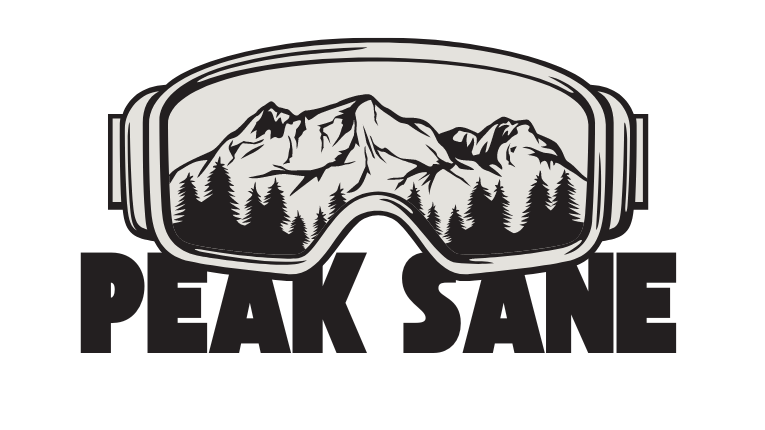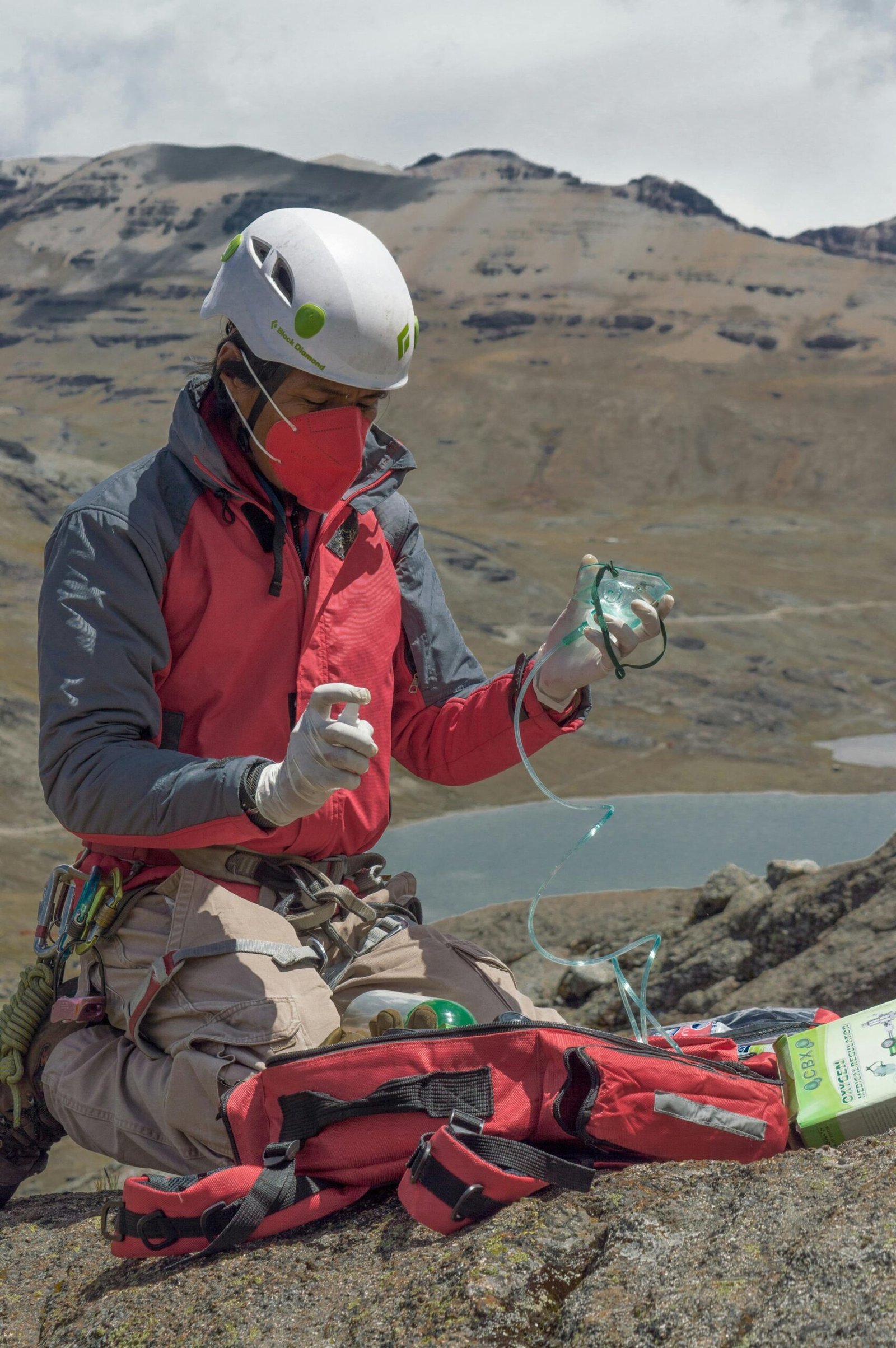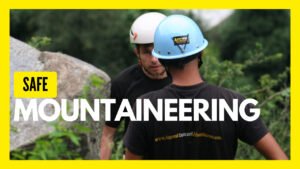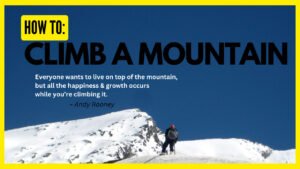Watching the views, trekking at high altitudes provides an exceptional and stunning adventure. But the higher you go, you more likely to run into one of the biggest killers of high-altitude expeditions: altitude sickness. Altitude sickness, or acute mountain sickness (AMS) can strike even the fittest of travelers as well as climbers with years of experience. It’s the bodies reaction to lower oxygen levels at higher altitudes, untreated it may result in life-threatening conditions such as High Altitude Pulmonary Edema (HAPE) or High Altitude Cerebral Edema(HACE).
I have had some episodes of High Altitude sickness on my past 20 years of climbing mountains, this is how to prevent, detect and treat it to have a safe and succesfull climb. In this article, I am going to take you through all that you need to know about altitude sickness in mountaineering; its causes, signs and symptoms as well as established preventions and treatment measures.
1. What is Altitude Sickness?
How Altitude Affects the Body
Altitude sickness is a lack of oxygen at high elevations — usually above 8,000 feet (2,500 meters) — due to the body not being able to adjust quickly enough. Our lungs want to be filled with air composed of 21% oxygen. When you go up to higher altitudes, the air pressure decreases and hence the oxygen to breathe — this decreases drastically. Because the body requires time to adapt to this level of relative oxygen deficiency, if acclimatization is not properly achieved, Altitude Sickness may ensue.
Three Kinds of Altitude Sickness
1. Acute Mountain Sickness, or AMS: This is the mildest and most common version of altitude sickness. Symptoms often mimic a hangover (headache, nausea, dizziness and fatigue).
High altitude pulmonary edema: this is the severe form of AMS when fluid begins to accumulate in your lungs. If left untreated it can be fatal to life. Shortness of breath, coughing, chest tightness and fatigue are symptoms.
High Altitude Cerebral Edema (HACE): High altitude cerebral edema is the most severe form of altitude sickness. It occurs when water from constricted blood vessels or capillaries leaks into brain tissues. Symptoms: confusion, difficulty walking, severe headache. HACE demands immediate descent as it is a situation of life and death.
E.g., My Battle with Altitude Sickness on Mount Kilimanjaro
One member of my mount Kilimanjaro climbing team experienced signs of AMS once we reached 12,000 feet. The headaches-and-nausea combo spoke of a body unacclimated in spite of his fitness. We were able to identify the early signs of altitude sickness, and we took swift action which enabled him to recover and continue up in safety.
2. Symptoms of Altitude Sickness
Recognizing the Tell-Tail Signs
One of the key things that you need to do when dealing with altitude sickness is catching it early. While symptoms can vary widely with the altitude and the individual, they generally occur between a few hours to a day or two after ascending rapidly. AMS can progress to more severe illnesses, including HAPE and HACE.
Common Symptoms of AMS:
how quickly they get a headache (most uniform symptom at 4.0)
Dizziness or lightheadedness
Fatigue or weakness
Nausea or vomiting
Loss of appetite
Shortness of breath
Difficulty sleeping
Swelling of the hands, feet or face
HAPE Symptoms (danger to life):
Changes in the way you breath even when at rest
Coughing up frothy, pink mucus
Chest pain or tightness
Extreme fatigue or weakness
Hyperventilation and palpitations
HACE (Life-Threatening) – Symptoms include:
Tension headaches which are very severe, and not controlled with over the counter pain relief
Confusion or disorientation
Unsteady, uncoordinated or difficulty walking (ataxia)
Hallucinations or Delusional behavior
Unconsciousness
For example: recognising HAPE in the Andes
After climbing in the Andes, a climber began to feel very short of breath even at rest, she had a constant cough and was just not feeling as good. We made a swift diagnosis of HAPE, gave oxygen and started an emergency descent. An acute recognition and prompt action that saved his life.
3. Risk Factors For Altitude Sickness
Who is Most at Risk?
Altitude sickness is the great leveler— it hits every host, including the finest climbing expert. Risk factors for altitude sickness include:
Key Risk Factors:
Fast Track: Moist people defintealy say that narrate altitde is the largest slouchy of hig gain sickness.
Starting Elevations Over 8,000 ft: Starting a climb at an elevation of over 8,000 feet enhances risk for AMS to start very early.
Physical exertion: Too much too soon during your ascent can exacerbate altitude sickness.
History of Altitude Sickness: If you’ve had altitude sickness once before, chances you’ll get it again.
Sleeping In High Altitude (sleeping at high elevations without proper acclimatization, this can increase risk for AMS, HAPE or HACE)
Example: Aconcagua Rapid Ascent
On my first Aconcagua expedition, a few in the group tried to climb too quickly (to save themselves time). Two members were experiencing AMS within the first 24 hours of arriving in camp at 16,000 feet due to the quick gain of elevation. Slowing down our walk and adjusting our regimen reduced the symptoms.
4. Thriving Well Above The Ground: Climbing With Altitude Sickness
Acclimatization is the Golden Rule
The best way to prevent altitude sickness is to acclimatize well, which means giving your body time to adjust to the thinner air. This method enables acclimatization and reduces the risk of getting AMS, HAPE, HACE as well.
Acclimatization Tips:
Golden rule of acclimatization: Climb High, Sleep Low. When you come to the tar in the day, climb and sleep exposed are low altitudes. This can assist the body to acclimatize to the altitude and then reduce when in more oxygen heavy areas.
Pace it: Remember to go slow especially in the first days of you climbing up. Don’t overdo it on your body if you are not used to doing anything.
Ascend Slowly: Do not ascend more than 1,000 feet (300 meters) per day above 8,000 ft. Take an additional night at each new elevation if possible to further your acclimatization.
Keep Hydrated: Dehydration can make altitude sickness symptoms worse. Water load (3-4 liters per day), avoid alcohol and caffeine (both can dehydrate you).
Consume Carbohydrates: Eating a high carbohydrate diet can also support the body in its acclimatization to high-altitude environments. Carbs are metabolized on less oxygen meaning that they can provide energy more effectively at altitude.
Medication for Prevention
Medications are also available that can help prevent altitude sickness, but must be taken with care.
Common Medications:
Acetazolamide (Diamox): Commonly used to hasten the process of acclimatization by improving your oxygen metabolism. And is used a day or 2 before you start your climb, and continued until after you are acclimatized.
Dexamethasone: Used in cases that involve more severe and used to reduce swelling in the brain for HACE. It is generally used as a last resort for individuals who have significant symptoms.
Sherpa Expeditions Abode to the Gods Everest Base Camp TrekA Perfect Itinerary Topping out at over 17,500′ next to the monstrous Mt.
During my trek to Everest Base Camp, the most important advice I was given about altitude sickness was that gradual ascent is key. Our team managed to get to 17,600 feet without major issues by following the general rule of adding days for acclimatization and going/coming back from climbs higher up.
5. How to treat altitude sickness: If you are affected by it
Immediate Actions to Take
If you or your teammate is getting symptoms of altitude sickness, the only safest way to respond is stop increasing. The sooner you identify and manage symptoms, the more likely it is to prevent worsening of illness.
Treating AMS a Step at a Time
Cease Ascend: Rest if AMS signs occur Acclimate your body to that elevation. Mild symptoms may dissipate within 24–48 hours with nothing more than rest and acclimatization.
Hydrate and sleep: Keep yourself hydrated and get loads of rest to improve your body towards recovery.
Medications: If you have acetazolamide (Diamox) it too reduces the time needed to acclimatize and lessens symptoms. Use ibuprofen or aspirin for a headache.
Heed Your Symptoms: Pay attention to symptoms They are getting worse or you have developed HAPE (High Altitude Pulmonary Edema) or HACE (High Altitude Cerebral Edma) it is an emergency.
Treatment of Emergency HAPE and HACE
HAPE and HACE are equally dangerous, the only resort in this situation is to ascent down immediately along with medical aid.
Treatment for HAPE:
It is important to descend to a lower altitude as soon as possible. Just dropping 800-1500 feet can lessen issues.
Supplemental oxygen if available
There are also prescription medications like Nifedipine which can help eliminate some of the fluid build up in the lungs.
If anything else, descent is still the one important thing.
Treatment for HACE:
You have to start descending as soon as possible even if you have to go very far down. Give oxygen if available.
Dexamethasone can help decrease brain swelling but it is not a descent.
Real Life Example — Emergency Descent Elbrus
I remember a winter climb of Mount Elbrus when one member of our party pushed for the summit at high altitude and began to show signs of HACE — confusion, lack of coordination. We began descending promptly and only a few hours into our descent, as we were under 12k feet his symptoms improved.
6. Elevation Acclimation and Training Mask
How To Acclimatize For High Mountain Climbing
An altitude sickness prevention program can get your body kind of ready for life in the death zone. Concentrate on improving cardiovascular conditioning, endurance and strength.
High-Altitude Training Tips:
High-Altitude Training: orphic masks (or altitude chambers) which help you simulate the conditions of high altitudes. This trains the body to be able to cope with reduced oxygen levels, and gradually allows it to produce more RBC’s, which is another way of saying that you are increasing the volume of your heart.
Cardio Training: Perform any form of cardio from running, cycling, or swimming to increase your lung capacity and stamina.
High Altitude Hiking: if you have any mountains or rocks nearby, train yourself at moderate elevation (6,000 to 8,000 ft. ) This helps acclimatise your body for the higher altitudes you are about to confront on your trek.
Weightlifting: To increase the strength of your legs, upper body and core, since backpacking is highly labor intensive and involves a lot of hiking up steep terrain at altitude.
Example: Training for Denali
In the months leading up to my Summit Denali attempt, I did this by training on high-altitude hikes that would promote both cardiovascular endurance and acclimation in an environment with less oxygen. Such training definetly helped and i could go that higher without altitude sickness.
7. High-Altitude Expeditions Recovery
Post-Climb Care
When you come back from an expedition at high altitude, your body will need time to recover from the physical demands of the weeks spent climbing. When it comes to recovery, the main focus should be on sleep, hydration, and nutrition.
Recovery Tips:
Rest Up and Hydrate: Drink a lot of fluids to rehydrate, as ascent to high-altitudes can even cause dehydration.
Stretching and Rest of Muscles: Gentle stretching and yoga will relieve muscle rigidity at the end.
Consume Nutrient-Dense Foods: Include sources of protein, carbohydrates and healthy fats in your daily diet to replenish your energy supplies and accelerate muscle recovery.
Climb Example: Island Peak estate Recovery Done right
Island Peak summit behind me, I took a number of days to rest, drink loads of water and do all the stretching exercises I could think of. This time off was necessary for me to completely heal and get ready for my next journey.
Conclusion
Although it is a very challenge to overcome the high altitudes during mountaineering these days, with proper knowledge and other precautions to prevent altitude sickness or treat the same securely. Whether you are taking Mount Kilimanjaro or Everest Base Camp and Denali, there is no one formula answer to how to avoid, prevent altitude sickness or treat it when the body is ravaged.
Strategize for gradual acclimatization, listen to your body and never be afraid of descending if you begin to get worse. Include these best practices to age-related changes and avoid a variety of exposures to keep yourself free of AMS and improve your chances of success.




